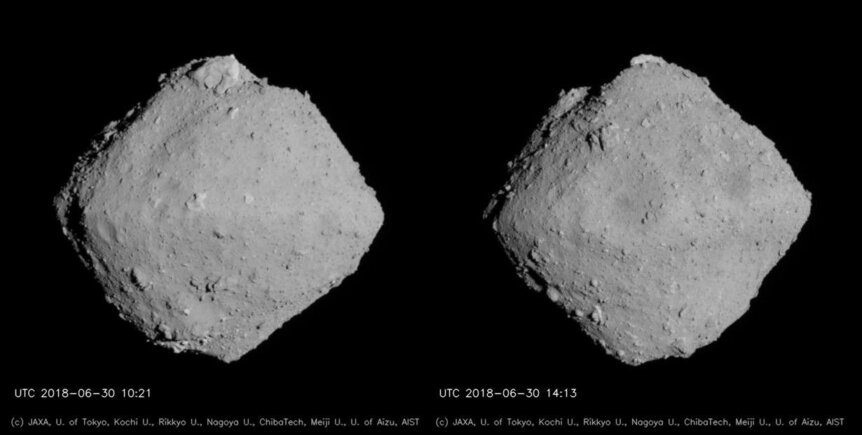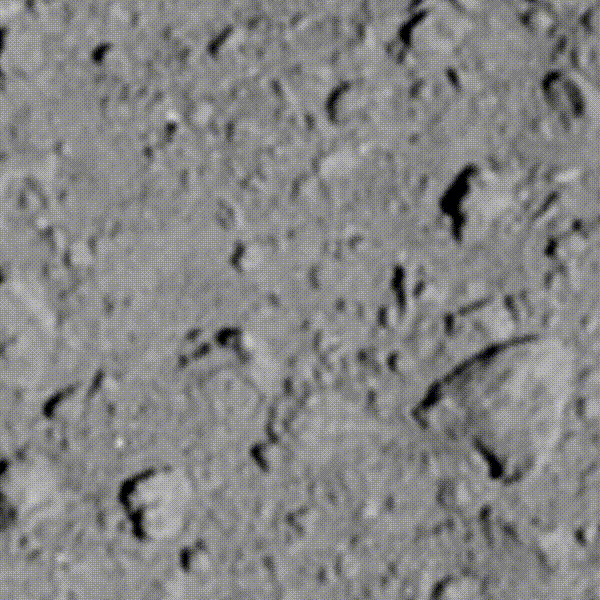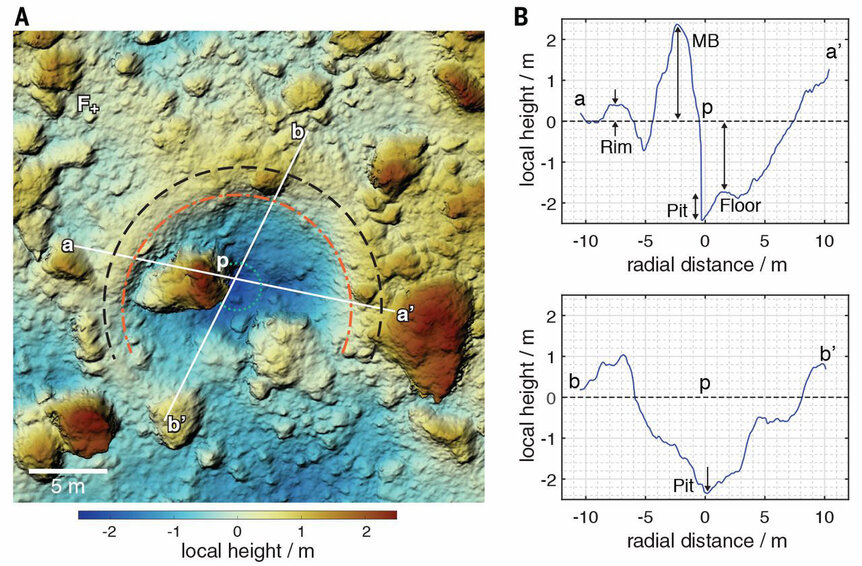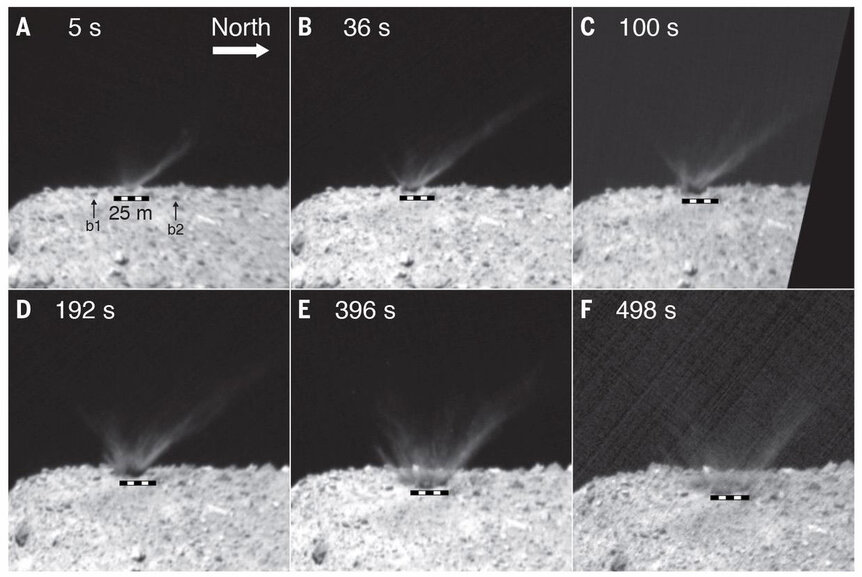Create a free profile to get unlimited access to exclusive videos, sweepstakes, and more!
Watch as Hayabusa2 blasts a 17.6-meter-wide crater into an asteroid
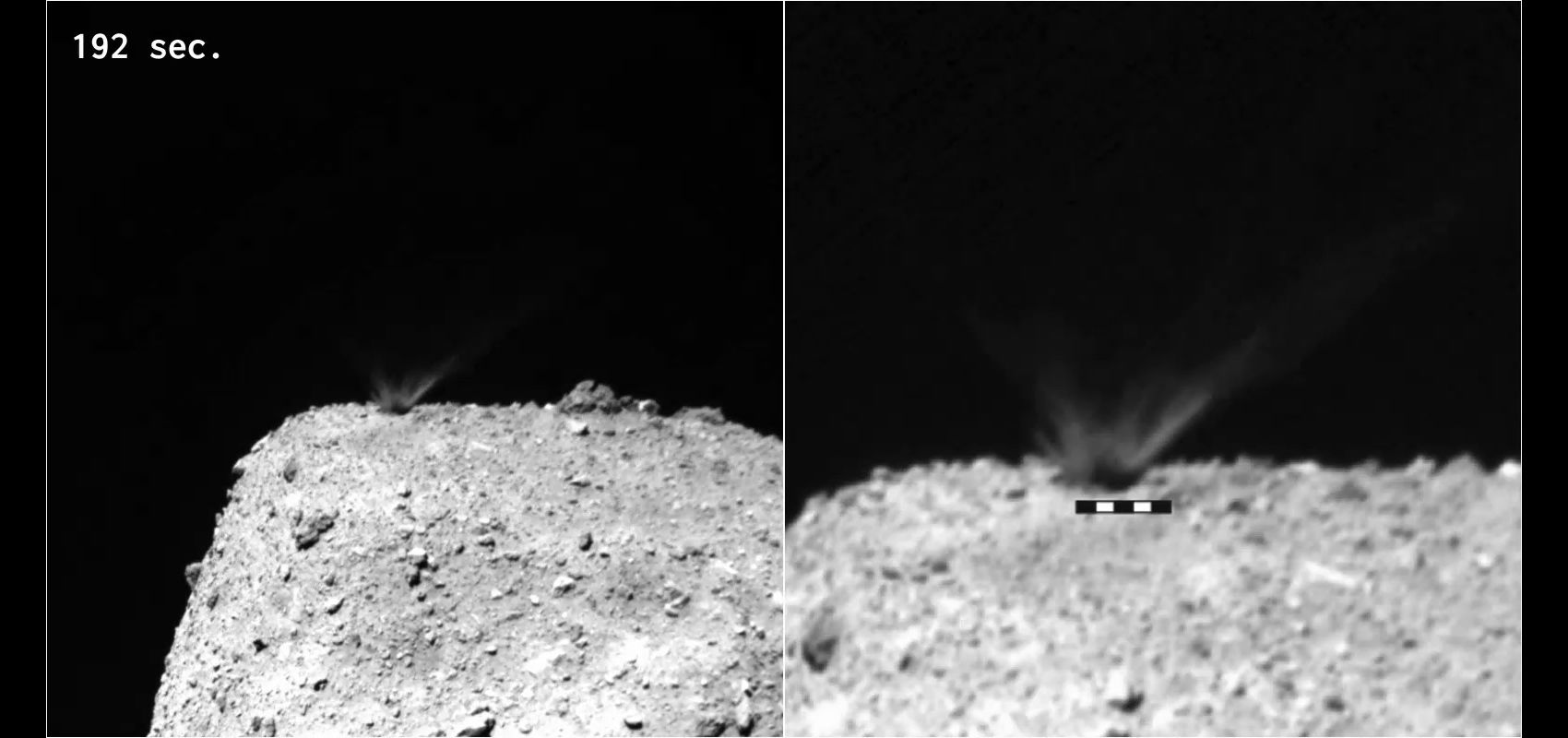
In June 2018, the Japanese Space Agency spacecraft Hayabusa2 arrived at the wee asteroid Ryugu. At roughly 900 meters in diameter, you could walk all the way around it in less than an hour… if your footsteps in the 1/100000th Earth gravity didn't fling you off into space.
The mission had many objectives: Observe the tiny world up close, take high resolution images to map the surface, examine its composition, and — one of the most important aspects — grab samples of the asteroid to bring back to Earth so scientists could examine them in labs.
It did this in two ways. The first, done in February 2019, was to drop the spacecraft very near the surface of Ryugu and shoot a small bullet into it. It then captured some of the debris that flew away, storing for the return trip to Earth.
The second, in April 2019, was a bit larger scale: It deployed a device called the Small Carry-on Impactor (or SCI), which was essentially a cannon. The spacecraft itself backed away, and the SCI then touched off an explosive device that accelerated a 2.5 kilogram lump of copper into the asteroid at over 7,000 kilometers per hour! The main purpose of this was to expose the subsurface of the asteroid so samples could be collected later, but it was also done to learn about the structure of the asteroid on and near the surface.
Some images were released of the crater not long after, but a paper just published in the journal Science comes with an extraordinary video of the event!
!!!!
These images were taken by the Deployable Camera 3, a small self-contained package released by the main spacecraft and placed about a kilometer away from the impact site to take images.
You can see the plume of ejected material blasting away from the impact site (the scale bar on the right is 25 meters in 5-meter intervals). About three weeks later, Hayabusa2 returned to this area to identify the crater, flying down to a height of 1.7 km above the surface. The crater was quickly spotted, just 20 meters from the aiming point. Pretty good, considering the spacecraft and asteroid were over 300 million km from Earth at the time!
The crater was measured to be 17.6 meters across its 40-centimeter-high rim — wider than a basketball court! It is also about three meters deep. Quite an impact. Weirdly, the crater is not circular, but more semi-circular. That's not due to the impact being at an angle; the scientists think it's due to a large boulder next to the impact site that distorted the explosion as it moved through the rock. You can see that in the animation, too; the ejected material is much thicker to the right than the left.
They nicknamed that large boulder Stable Block, because it didn't move during the event, and they suspect it goes fairly deep. Another rock, called Mobile Block, is about 5 meters long and was moved by the impact 3 meters horizontally and 1 meter upslope. It actually sticks up out of the crater a bit.
A few months after the impact, in July 2019, Hayabusa2 collected samples from the site, critical dust and gravel that may have spent billions of years beneath Ryugu's surface. But even before then, the images of the crater and ejected material told scientists a couple of important things.
The way a crater forms can depend on the gravity of the object and/or how structurally sound the surface is. They expected the formation would be strength-dominated, but in fact the footage showed them that the growth of the crater was dominated more by gravity, weak as it is on Ryugu. That means the surface cohesion is extremely low; the material really doesn't hold together well, like grains of sand.
That also implies the surface is more easily modified by impacts than expected. There are two different models for how old the surface is; one says it's nine million years old, and the other 160. In other words, impacts over time should resurface the asteroid, and the two models predict much different ages. It turns out this new evidence that the crater was gravity-dominated means the younger estimate is more likely correct. That in turn means a typical crater on its surface should be erased by subsequent impact in less than 100,000 years.
That's pretty fast. And that's an important piece of information for people who study asteroids.
Which, of course, is the whole point. We want to know more about these flying rocks, and Hayabusa2 is paying off hugely there.
And it's not even done. Hayabusa2 left Ryugu in November 2019, and will arrive back at Earth and drop the samples in 2023. I wonder how much of an impact that will have?
Tip o' the blast shield to my friend and astronomer Jonathan McDowell.
